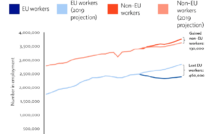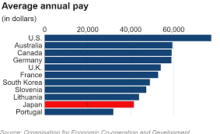ICE Fails to Provide Basic Oversight of Solitary Confinement and Unlawfully Destroys Records


[ad_1]
U.S. Immigration and Customs Enforcement (ICE) has been identified to improperly topic people in its custody to solitary confinement and has destroyed solitary confinement information in violation of a information retention schedule and an settlement to protect information in a lawsuit.
On October 13, the U.S. Division of Homeland Safety (DHS) Workplace of Inspector Normal issued a report detailing ICE’s abuse of solitary confinement in immigration detention and incompetence relating to the way it maintains information documenting the remedy of people topic to solitary confinement.
The report discovered:
- ICE couldn’t exhibit it thought-about alternate options to segregation for 72% of people positioned in solitary confinement.
- ICE didn’t report 13% of situations when people have been positioned in solitary confinement.
- ICE didn’t guarantee detention services complied with the Nationwide Archives and Data Administration’s (NARA) retention schedules. Because of ICE’s failure to correctly retain information, 24 of 265 detention information have been improperly destroyed.
The data gathered to help the report’s findings are appalling. In over 1200 complaints shared via the DHS OIG hotline between FY 2015 and FY 2019, people acknowledged, amongst different issues: they didn’t know why they have been positioned in solitary confinement; have been denied medical consideration, meals, and showers; and have been threatened with solitary confinement. In a single occasion, a person was positioned in solitary confinement as retaliation for submitting a grievance about ICE officer abuse.
In unannounced visits, OIG inspectors discovered detained people improperly held in solitary confinement for lengthy intervals of time with out documentation or overview beneath the detention requirements. ICE positioned some folks in solitary confinement “prematurely or inappropriately,” with restricted to no time outdoors of their cells. In a single inspection, it was found people have been held for 22 to 23 hours a day; two people had been in solitary confinement for over 300 days.
As well as, the report famous that solitary confinement typically elevated over the previous few years. Previous to 2013, ICE didn’t even have an official system for recording and monitoring detainees positioned in solitary confinement. However official numbers state that between 2015 and 2019, 13,784 people have been positioned in administrative or disciplinary solitary confinement.
The report was simple in its condemnation of ICE’s failure to stick to its personal detention requirements and the ensuing lack of transparency and obligatory oversight.
It described intimately how ICE didn’t adjust to solitary confinement reporting necessities, which embody assessing whether or not alternate options to solitary confinement exist. In a statistical pattern, the OIG discovered “no proof” that ICE had thought-about alternate options to solitary confinement in 342 out of 474 situations (72%).
In the identical statistical pattern, over half of the folks ICE positioned in solitary confinement had “particular vulnerabilities,” together with figuring out as LGBTI, have been on a starvation strike, suicidal, or having a psychological sickness, reminiscent of schizophrenia or bipolar dysfunction. And lots of of those situations weren’t correctly reported in violation of the detention requirements.
The report additionally discovered that ICE services didn’t adjust to report retention necessities and violated a litigation maintain the place it agreed to not destroy information, together with detainee segregation reviews, after a lawsuit difficult a information retention schedule for detention-related information was introduced.
Below the retention schedule, ICE was required to “retain detention information for six years after a detainee’s switch or launch from a facility and segregation reviews for 7 years from the tip of the fiscal yr wherein the detainee was launched from segregation.”
The report supplied the next instance: “If a detainee was launched from segregation in October 2014 (the start of our scope) and launched from the power the identical month, a detainee’s segregation orders, that are within the detention file, couldn’t be destroyed till September 2022.”
Regardless of this clear mandate, the report discovered that ICE couldn’t present 32 of the 265 detention information from the statistical pattern and admitted to destroying 24 of these information. Based on the OIG, 16 detention information topic to the litigation maintain have been destroyed in November 2020, eight months after ICE agreed to the maintain. The OIG’s workplace was not capable of uncover when the opposite information have been destroyed.
The OIG’s report confirms ICE’s callous failure to protect even fundamental knowledge about solitary confinement—an especially controversial follow that has been extensively condemned. It’s no shock that as a result of ICE doesn’t conduct inner oversight to make sure services monitor and report solitary confinement and depends on self-reporting mechanisms that aren’t used uniformly, it’s has didn’t adjust to its personal detention requirements.
It’s a optimistic step that ICE has concurred with the suggestions contained on this report – together with agreeing to develop higher steering and monitoring mechanisms for gathering solitary confinement knowledge and compliance with information retention schedules. There isn’t a doubt, nonetheless, that these steps wouldn’t have been taken if ICE’s failures weren’t uncovered by the OIG’s focused investigations.
Additionally, the steps ICE outlines usually are not sufficient. ICE states that it’ll adjust to OIG’s suggestions by August 2022. What oversight will occur within the many intervening months to make sure knowledge is collected and information usually are not destroyed?
The lawsuit introduced in March 2020 to protect information associated to solitary confinement stemmed from an identical distrust of ICE’s skill to observe its personal detention insurance policies and practices and ICE’s overt makes an attempt to destroy its personal detention information. As teams who filed an amicus transient in that case famous, ICE’s abuse and mistreatment of people in its custody underscores the necessity for larger transparency and oversight and longer retention schedules for key paperwork reminiscent of solitary confinement information.
FILED UNDER: Immigration and Customs Enforcement, Workplace of Inspector Normal
[ad_2]
Source link
Recent Posts
New Immigration Pathways in Europe: A Breakdown of Digital Nomad Visas
The rise of remote work has paved the way for digital nomad visas, offering professionals…
Family Reunification Policies: How Different Countries Approach Visa Delays and Backlogs
Visa delays and backlogs have long been a challenge for families seeking reunification, and the…
Student Visa Changes in 2024: Key Updates in the US, Canada, Australia, and the UK
Student visa policies in the US, Canada, Australia, and the UK have seen significant changes…
The Impact of Global Inflation on Immigrant Communities
As global inflation continues to rise, immigrant communities are disproportionately affected. In many countries, the…
Climate Refugees: The Growing Role of Climate Change in Immigration Policy
Climate change is increasingly driving migration, with rising sea levels, severe droughts, and catastrophic weather…
Top Countries with Investor Visa Programs in 2024: Requirements and Benefits
Investor visa programs offer pathways to residency or citizenship in exchange for significant financial investment,…


